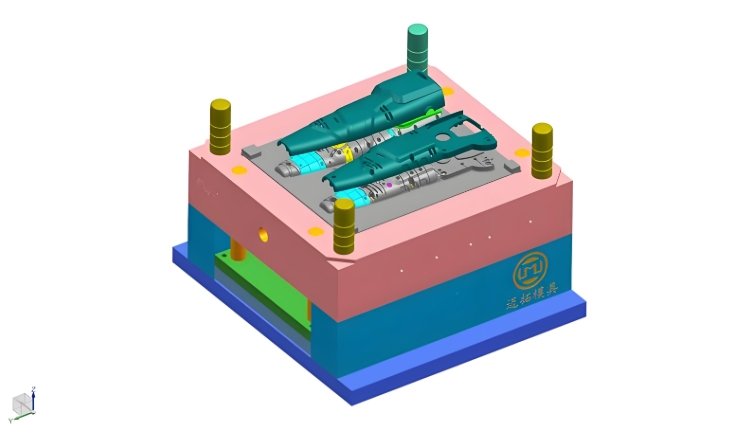
Liquid Silicone Rubber (LSR) is a key material in electronic injection molding. It provides excellent sealing for sensitive electronic components. Mold makers use LSR to create durable, flexible, and high-precision parts. This material protects devices from moisture, dust, and extreme temperatures.
1. What is Liquid Silicone Rubber (LSR)?
LSR is a high-purity silicone material. It stays liquid before molding. After curing, it becomes solid and flexible. It is resistant to heat, chemicals, and aging.
1.1 Key Properties of LSR
- High temperature resistance.
- Excellent flexibility.
- Strong chemical resistance.
- Waterproof and dustproof.
- Biocompatible and non-toxic.
2. Why LSR is Ideal for Electronic Sealing
2.1 Superior Moisture Protection
Electronic devices must stay dry. Electronic injection molding with LSR creates watertight seals. This protects sensitive circuits from humidity and spills.
2.2 High Thermal Stability
Heat can damage electronics. LSR withstands extreme temperatures. Mold makers use it to ensure stability in harsh environments.
2.3 Chemical Resistance
LSR resists oils, acids, and solvents. This makes it ideal for industrial and medical electronics.
2.4 Durability and Longevity
Seals made from LSR last for years. They do not degrade or crack easily. Mold makers rely on LSR for long-term performance.
3. Applications of LSR in Electronic Injection Molding
3.1 Connector Seals
Electronic connectors need tight seals. Electronic injection molding with LSR ensures a perfect fit. This prevents dust and moisture from entering.
3.2 Keypads and Buttons
LSR is flexible and durable. It is perfect for molding keypads in remote controls and medical devices.
3.3 LED Lighting Components
Many LED lights use LSR for sealing. It enhances heat resistance and ensures long-lasting performance.
3.4 Battery Seals
Batteries require secure sealing. LSR prevents leaks and increases safety. Mold makers use it to protect lithium-ion cells.
4. The Injection Molding Process for LSR
4.1 Step 1: Material Preparation
LSR comes in two liquid parts. These are mixed before molding.
4.2 Step 2: Injection Molding
The mixture is injected into a mold. It fills even the smallest details.
4.3 Step 3: Curing and Cooling
LSR cures quickly under heat. After cooling, the part is ready for use.
4.4 Step 4: Final Inspection
Mold makers check for defects. They ensure every part meets quality standards.
5. Advantages of LSR Over Other Materials
5.1 Better Flexibility
LSR remains soft and stretchable. Other plastics may become brittle over time.
5.2 Improved Precision
LSR flows smoothly into molds. This allows for detailed, high-precision parts.
5.3 Faster Production
LSR cures quickly. Electronic injection molding with LSR reduces cycle times.
5.4 Lower Defect Rates
LSR molding produces fewer defects. Mold makers achieve better consistency in mass production.
6. Challenges in LSR Molding
6.1 Material Handling Complexity
LSR requires specialized handling. It must be mixed and stored carefully.
6.2 Equipment Costs
LSR molding machines are expensive. Investing in the right equipment is crucial.
6.3 Mold Design Precision
Molds must be perfect. Even small errors can ruin the final product.
7. How Mold Makers Optimize LSR Molding
7.1 Using High-Quality Molds
Mold makers use precision molds. This ensures accurate and repeatable results.
7.2 Controlling Temperature and Pressure
Proper temperature control improves curing. Pressure adjustments prevent defects.
7.3 Testing for Quality
Every batch undergoes strict quality checks. This guarantees high-performance sealing.
8. Future of LSR in Electronic Injection Molding
8.1 Growth in Wearable Electronics
More devices need waterproof seals. LSR will be essential for future smartwatches and medical wearables.
8.2 Advances in Smart Materials
New LSR formulas will enhance flexibility and durability. This will expand its applications.
8.3 Increased Automation
Robotic systems will improve electronic injection molding with LSR. This will reduce costs and increase efficiency.
LSR is a game-changer in electronic injection molding. It provides unmatched sealing, flexibility, and durability. Mold makers rely on LSR to protect electronic components from moisture, heat, and chemicals. As technology advances, LSR will play a bigger role in future electronics.
